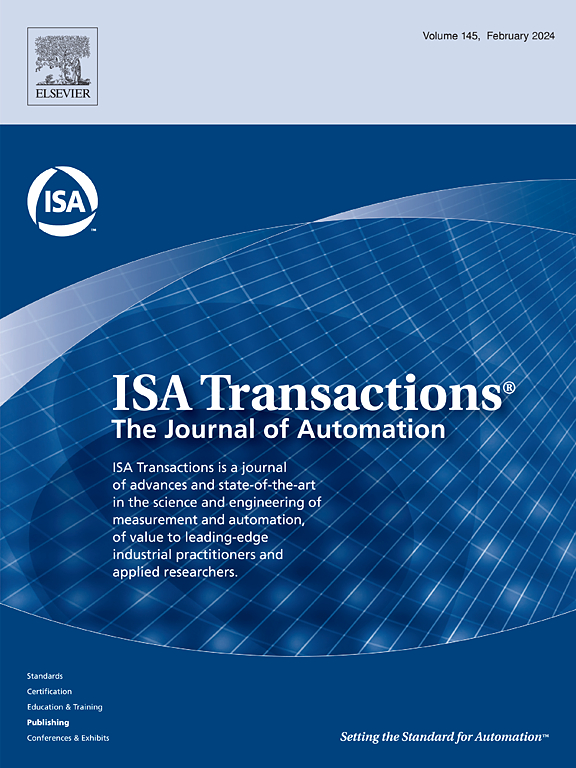Feedback chaotic growth optimizer for parameter extraction of a novel direct current arc model
IF 6.5
2区 计算机科学
Q1 AUTOMATION & CONTROL SYSTEMS
引用次数: 0
Abstract
Direct current (DC) arc faults are a leading cause of fire incidents in photovoltaic (PV) systems. Accurate modeling of DC arc faults is essential for understanding the underlying mechanisms of DC arcs and for developing effective detection strategies. In this study, we propose a novel model for DC arcs, referred to as the exponent segmented noise model. This model effectively characterizes arc noise by establishing an exponential relationship between frequency values and spectral energy. To enable precise parameter extraction from the exponent segmented noise model, we introduce a new metaheuristic algorithm called the feedback chaotic growth optimizer (FCGRO). FCGRO improves upon the traditional growth optimizer (GRO) by integrating feedback operators and chaos mechanisms. Firstly, the convergence performance of FCGRO is rigorously evaluated through comparative experiments on three well-established benchmark engineering optimization problems. Subsequently, based on data collected from an established experimental platform, the proposed FCGRO and eight state-of-the-art algorithms are employed to extract parameters of the exponent segmented noise model for DC arc faults. The FCGRO achieves an overall average root mean square error (RMSE) of 0.0418 with a standard deviation of 0.00818, representing reductions of at least 10.43 % and 26.86 %, respectively, compared to the other eight methods. These results indicate that FCGRO delivers more accurate and stable parameter estimations than the competing algorithms. Regarding computational efficiency, FCGRO has an average processing time of 9.969 s, ranking it third among the nine evaluated methods, which confirms its competitiveness in terms of speed. Finally, compared with existing DC arc models, the proposed exponent segmented noise model reduces RMSE by an average of 53.26 %, demonstrating its superior modeling capability.
一种新型直流电弧模型参数提取的反馈混沌生长优化器。
直流电弧故障是引起光伏系统火灾的主要原因之一。准确的直流电弧故障建模对于理解直流电弧的潜在机制和制定有效的检测策略至关重要。在这项研究中,我们提出了一种新的直流电弧模型,称为指数分割噪声模型。该模型通过建立频率值与谱能量之间的指数关系,有效地表征了电弧噪声。为了从指数分割噪声模型中精确提取参数,我们引入了一种新的元启发式算法,称为反馈混沌生长优化器(FCGRO)。FCGRO通过集成反馈算子和混沌机制对传统的增长优化器(GRO)进行改进。首先,通过对三个已建立的基准工程优化问题的对比实验,严格评价了FCGRO的收敛性能。随后,基于已建立的实验平台收集的数据,利用所提出的FCGRO和8种最新算法提取直流电弧故障指数分割噪声模型的参数。FCGRO的总体平均均方根误差(RMSE)为0.0418,标准差为0.00818,与其他八种方法相比,分别降低了至少10.43 %和26.86 %。这些结果表明,与竞争算法相比,FCGRO提供了更准确和稳定的参数估计。在计算效率方面,FCGRO的平均处理时间为9.969 s,在9种评估方法中排名第三,这证实了其在速度方面的竞争力。最后,与现有直流电弧模型相比,所提出的指数分割噪声模型平均降低RMSE 53.26 %,显示了其优越的建模能力。
本文章由计算机程序翻译,如有差异,请以英文原文为准。
求助全文
约1分钟内获得全文
求助全文
来源期刊

ISA transactions
工程技术-工程:综合
CiteScore
11.70
自引率
12.30%
发文量
824
审稿时长
4.4 months
期刊介绍:
ISA Transactions serves as a platform for showcasing advancements in measurement and automation, catering to both industrial practitioners and applied researchers. It covers a wide array of topics within measurement, including sensors, signal processing, data analysis, and fault detection, supported by techniques such as artificial intelligence and communication systems. Automation topics encompass control strategies, modelling, system reliability, and maintenance, alongside optimization and human-machine interaction. The journal targets research and development professionals in control systems, process instrumentation, and automation from academia and industry.
 求助内容:
求助内容: 应助结果提醒方式:
应助结果提醒方式:


